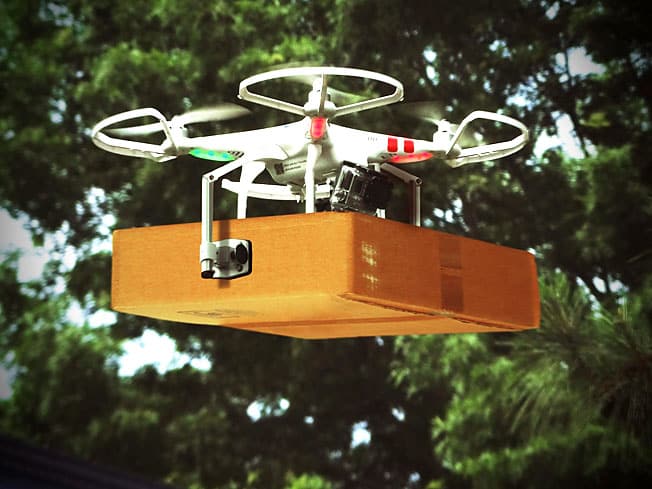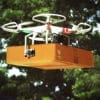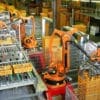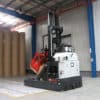Automating industry: 5 promising technologies to lookout for – words Alexa Wang
Nearly all industries today have reaped the benefits of the technological era we are currently in. Sadly, the construction and manufacturing industries have performed dismally in this current generation of driverless cars and fully automated robots.
In 2018 it is still common to see construction workers again scampering across scaffolding, laying rebar and pouring concrete. While automation has dramatically advanced the manufacturing sector, the construction sector is still lagging behind with lack of efficient and automated machinery.
Do not despair yet; there are still some revolutionaries working hard to change this situation by introducing artificial intelligence, robotics and 3D printing in the building industry. These technologies are set to revolutionize the construction sector.
Here are five groundbreaking technologies that are likely to be popular in the construction and manufacturing sites of the future.
Semi-Automatic Brick Layer(SAM)
Did you know walls can be built using other materials other than concrete? We have been using bricks to create barriers, since the beginning of the industrial revolution. The only drawback of making the walls using blocks is the labor intensity involved. A typical bricklayer is only able to lay an average of 500 bricks in a single day.
According to digital trends, The SAM OR Semi-Automated Mason is a construction robot capable of laying a large 6,000 bricks per day. Despite this astounding capability, the SAM will not eliminate all human workers yet. There must be some workers present to help load the machine and tidy up the mortar.
SAM will eliminate heavy lifting, therefore saving time, money and a few backs.
3D Printing
3D printing is not a new technology and has been used in construction for a couple of years now. An example is Winsun, a company located in China. Winsun builds walls in portions and transports them to the site for assembling. Some construction sites print their materials on site. This year the Copenhagen’s BOD (Building On Demand printer will be launched and has the capability of printing layers of concrete 5cm-7cm thick at 3 meters per minute. This advanced 3D printer will make concrete slabs using recycled tiles and sand.
Contour Crafting, another pioneering company in 3D printing for construction, is expected to start sales for their construction printer later this year.
Drones
The main limitation of using 3D printed buildings is the “gantry,” in layman terms; the robotic arm that does the printing. Getting a robust robotic arm is pretty tricky, but even if you get one huge enough, you can’t use more than one at a time.
Imagine this: You are using 5 or 6 massive robotic arms at the same time in a limited space, they will get in each other’s way. A perfect solution is using hundreds or thousands of tiny useful robots. An army of robots is capable of working as a team on a construction site with unlimited size without colliding with each other. Researchers from Havard have invented brick-laying termite bots that are capable of laying bricks. Another new invention is from ETH Zurich where researchers have created quadcopters that work in harmony, and are capable of building rope bridges.
When researchers solve the slight issue of power, seeing drones in construction sites, carrying materials will be a usual sight.
Artificial Intelligence
Quality software is imperative for any drone, robotic arm or 3D printer. For the successful takeover of robots in the construction sites, they will need perfect intelligence, of the artificial kind. AI will enable construction bots to be fully automated and also have the ability to guide themselves. Deep learning will also ensure the robots learn as they work.
Engineers at Smartvid.io have been able to use millions of videos and photos taken at construction sites to teach their software on how to operate in a construction site and avoid unsafe conditions.
Mesh Maker
The folks at ETH Zurich have invented an In-situ fabricator for their NEST (Next Evolution in Sustainable Building Technologies) in Dübendorf. The fabricator is a robotic arm that rests on a frame with caterpillar tracks. The fabricator is capable of constructing two layers of metal bars to form a mesh framework. Concrete will be subsequently used to fill the mesh frame. According to ETH Zurich’s this free roaming, the robot uses mesh mold technology meaning it can create a framework that is capable of bending and waving.
While making the above technologies viable for the construction industry, it is crucial for researchers and tech-heads work with architects who are more eager to transform and revolutionize the construction industry.
Despite the small teething problems, we will achieve full automation of the construction and manufacturing industries. There is a time when buildings will virtually raise themselves.
Automating industry: 5 promising technologies to lookout for – words Alexa Wang









